How to Measure Progress in ABA Therapy
Effective Techniques for Monitoring ABA Therapy Progress


Understanding the Importance of Progress Measurement in ABA Therapy
Applied Behavior Analysis (ABA) therapy is an evidence-based approach widely used for children with Autism Spectrum Disorder (ASD) and developmental disabilities. A critical component of ABA therapy is tracking progress, as it helps ensure that the therapy remains aligned with the child's goals and allows for necessary adjustments to the treatment plan. This article delves into the various methods and practices used to measure progress in ABA therapy, emphasizing the significance of a data-driven approach in fostering effective outcomes.
The Essential Role of Continuous Measurements in ABA
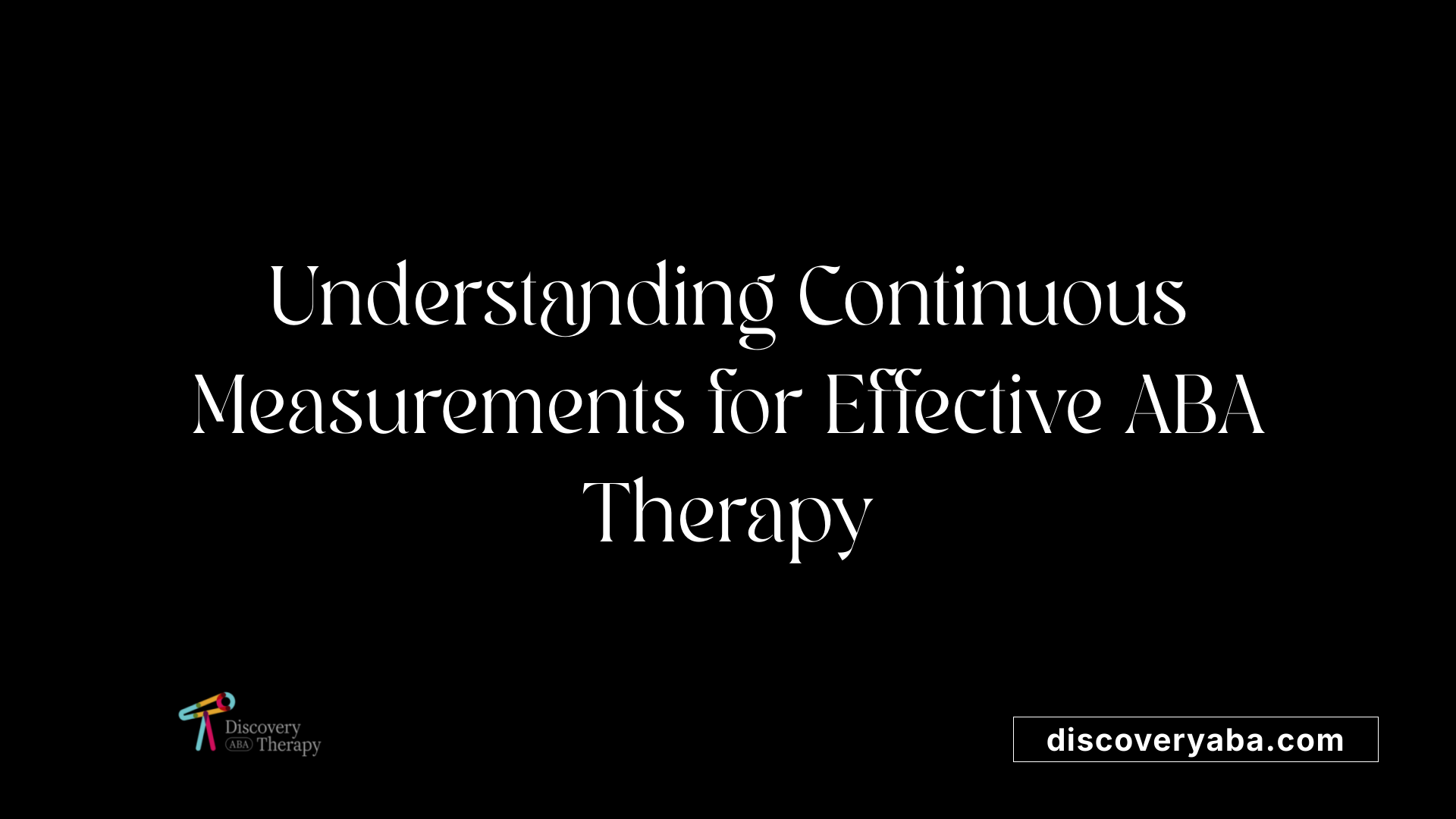
What are continuous measurements in ABA?
Continuous measurement in applied behavior analysis (ABA) involves tracking every instance of a target behavior within a specified time frame, making it crucial for determining effective treatments. The primary methods of continuous measurement include:
- Frequency: Counts how often a behavior occurs. This is essential for identifying increases or decreases in specific behaviors during therapy.
- Rate: Expresses frequency per time unit, allowing therapists to measure how many times a behavior occurs in relation to an established period.
- Duration: Measures how long a behavior lasts. It helps in assessing attention spans and the persistence of challenging behaviors like tantrums.
- Latency: Captures the time from a prompt until the behavior begins. This reflects the child's responsiveness to cues and instructions.
- Interresponse Time (IRT): Records the duration between two successive responses, providing insights into the patterns and intervals of specific behaviors.
These continuous measurement methods are foundational for Registered Behavior Technicians (RBTs) and are essential for data collection and analysis, ensuring informed decisions about interventions and treatment plans. Collectively, they enable therapists to adapt strategies based on real-time data, maximizing the effectiveness of ABA therapy and fostering a child's progress.
Leveraging Progress Reports for Tracking Development
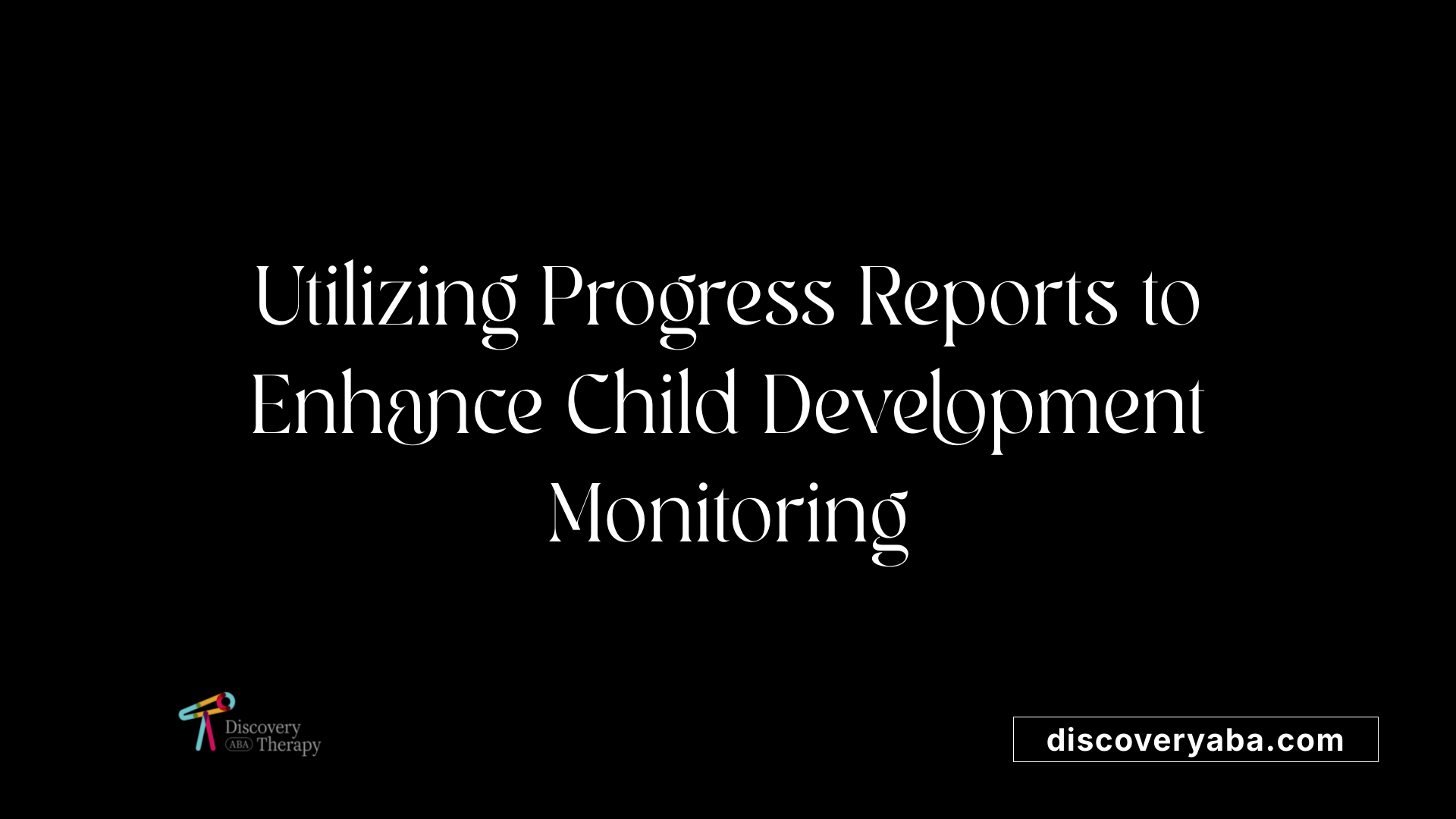
Role of progress reports in monitoring child development and therapy effectiveness
Progress reports play a pivotal role in Applied Behavior Analysis (ABA) therapy by documenting children’s achievements and enhancing the monitoring of their development. These reports are built on a data-driven framework that starts with a baseline assessment, establishing a child’s initial functioning level.
Therapists collect data during therapy sessions through a variety of methods such as direct observation, video recording, and standardized assessments. This data focuses on specific behaviors or skills that are essential for tracking a child's progress over time.
Regularly generated progress reports are communicated to parents. They summarize findings, highlight improvements, and provide a visual representation of the data, typically through graphs and charts. This facilitates understanding and makes it easier for both therapists and parents to identify trends in the child’s behaviors.
Methods for data collection and representation
To effectively monitor progress, therapists employ several data collection strategies:
| Method | Purpose | Details |
|---|---|---|
| Frequency Data | Tracks how often a behavior occurs | Helps determine if behaviors are increasing or decreasing. |
| Duration Data | Measures how long a behavior lasts | Assists in understanding attention spans or behavior persistence. |
| Latency Data | Times the response after a prompt | Reflects responsiveness to instructions or cues. |
| Visual Aids | Graphs and charts for data representation | Enable therapists and parents to easily identify behavioral trends. |
By incorporating a variety of data collection methods, therapists can make informed decisions, ensuring therapy remains aligned with the individual goals of each child. Regular updates and communication ensure that progress can be dynamically reviewed and treatment plans adjusted as needed.
Popular Assessments in Monitoring ABA Progress
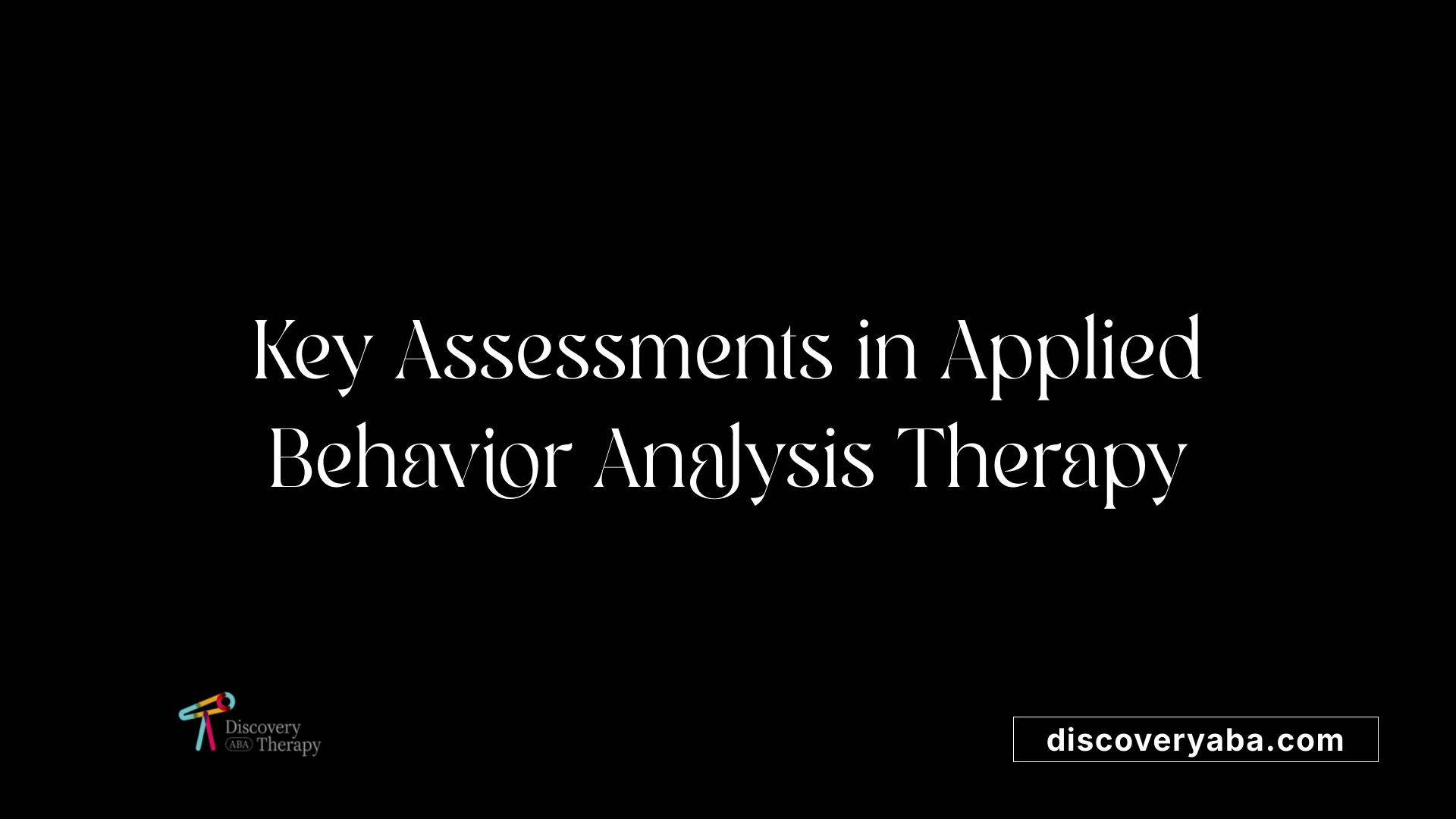
What are the common assessments used in ABA therapy?
Common ABA assessments include various standardized tools that evaluate a child's unique skill set and track their progress effectively. Here are some well-regarded assessments used in the field:
| Assessment Name | Focus Area | Key Features |
|---|---|---|
| Early Start Denver Model (ESDM) | Early intervention | Combines behavioral techniques within a developmental framework. |
| Assessment of Basic Language and Learning Skills Revised (ABLS-R) | Language and learning | Assesses skills necessary for effective communication and learning. |
| Promoting Emergence of Advanced Knowledge (PEAK) | Advanced learning | Focuses on establishing advanced knowledge and skills beyond basic communication. |
| Assessment of Functional Living Skills (AFLS) | Daily living | Evaluates skills needed for everyday independent living. |
| Verbal Behavior Milestones Assessment Placement Program (VB-MAPP) | Verbal skills | Measures verbal skill milestones to guide therapy. |
| Essential for Living (EFL) | Functional skills | Emphasizes teaching functional communication and daily life skills. |
These assessments not only help in identifying a child's current abilities but also provide a framework for setting specific goals tailored to each child's needs. By utilizing such assessments, therapists can regularly measure improvements, allowing for timely adjustments to treatment plans based on individual progress.
Role of Outcome Measures in Shaping ABA Strategies
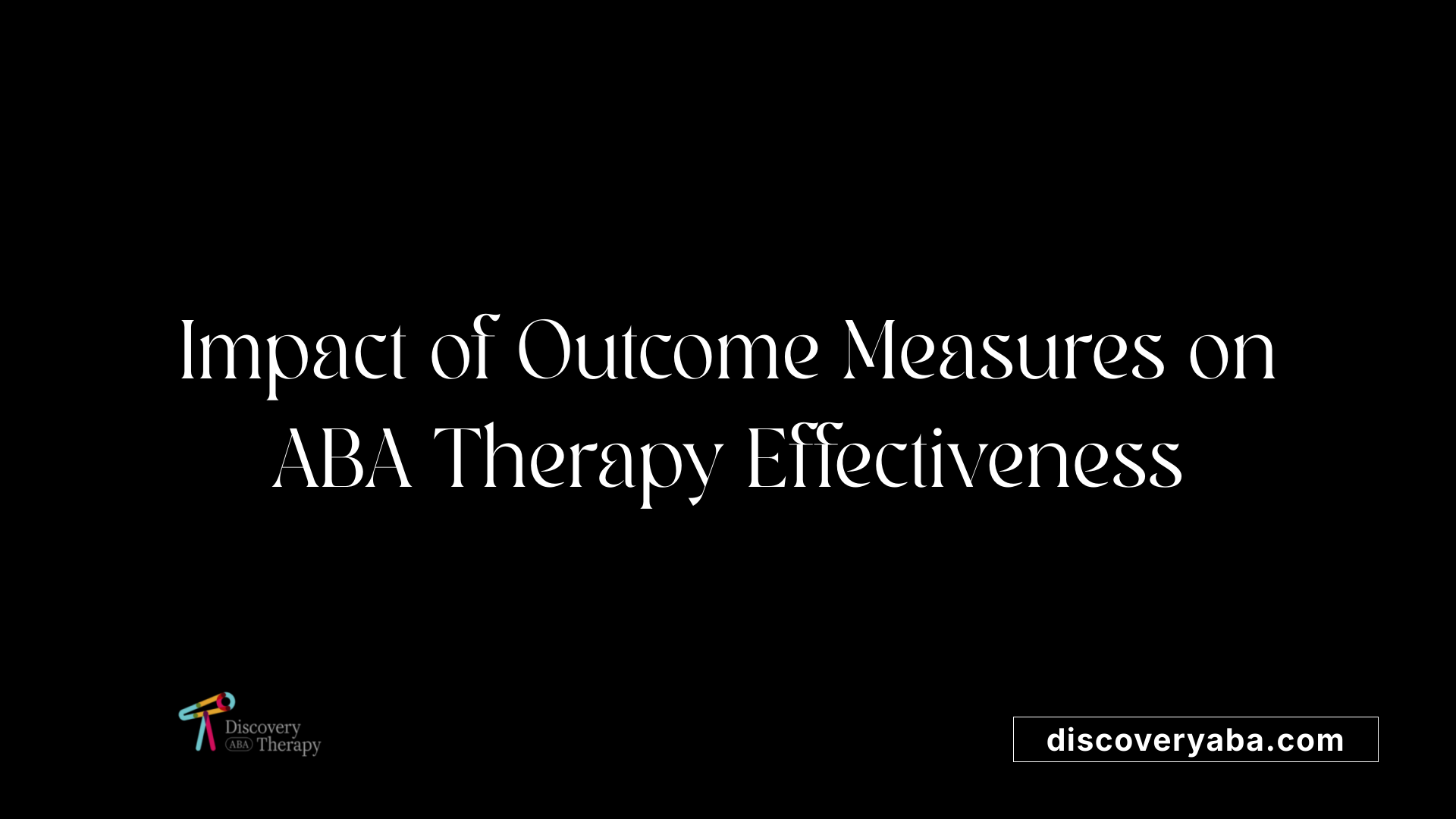
What are ABA outcome measures and how do they inform therapy strategies?
ABA outcome measures are critical tools used to assess the effectiveness of therapy by evaluating specific adaptive skills. These standardized assessments offer insights into a child's progress and help guide intervention strategies tailored to individual needs.
Approximately 66% of children referred for ABA therapy stay engaged in services for at least 12 months, while fewer than 50% continue for 24 months. This disparity points to variability in therapy duration, often driven by unique individual circumstances. Factors such as a child's prior special education history or having a single-parent household can significantly influence how long they remain in therapy.
The concept of treatment dosage, which includes both the intensity and duration of interventions, is essential for predicting the success of therapy. Research indicates that treatment dosage can account for 50-67% of the variance in outcomes. Consequently, children with lower baseline adaptive levels tend to achieve more substantial gains, underscoring the importance of early intervention and the need for personalized treatment plans.
Factors influencing therapy duration and effectiveness
Monitoring progress through objective measures enables therapists to adjust strategies and ensure the therapy remains aligned with each child’s goals. By analyzing data collection methods—like frequency, duration, and latency tracking—therapists can make informed decisions regarding ongoing treatment effectiveness. Regular evaluations not only foster accountability but also facilitate collaborative communication with parents, enabling a more holistic approach to the child's development.
In summary, the integration of outcome measures into ABA therapy is pivotal in shaping effective strategies tailored to meet each child’s unique needs. Regular assessment and adaptation of these strategies lead to meaningful progress, enhancing overall treatment effectiveness and supporting developmental goals.
Collaboration and Communication in Progress Monitoring
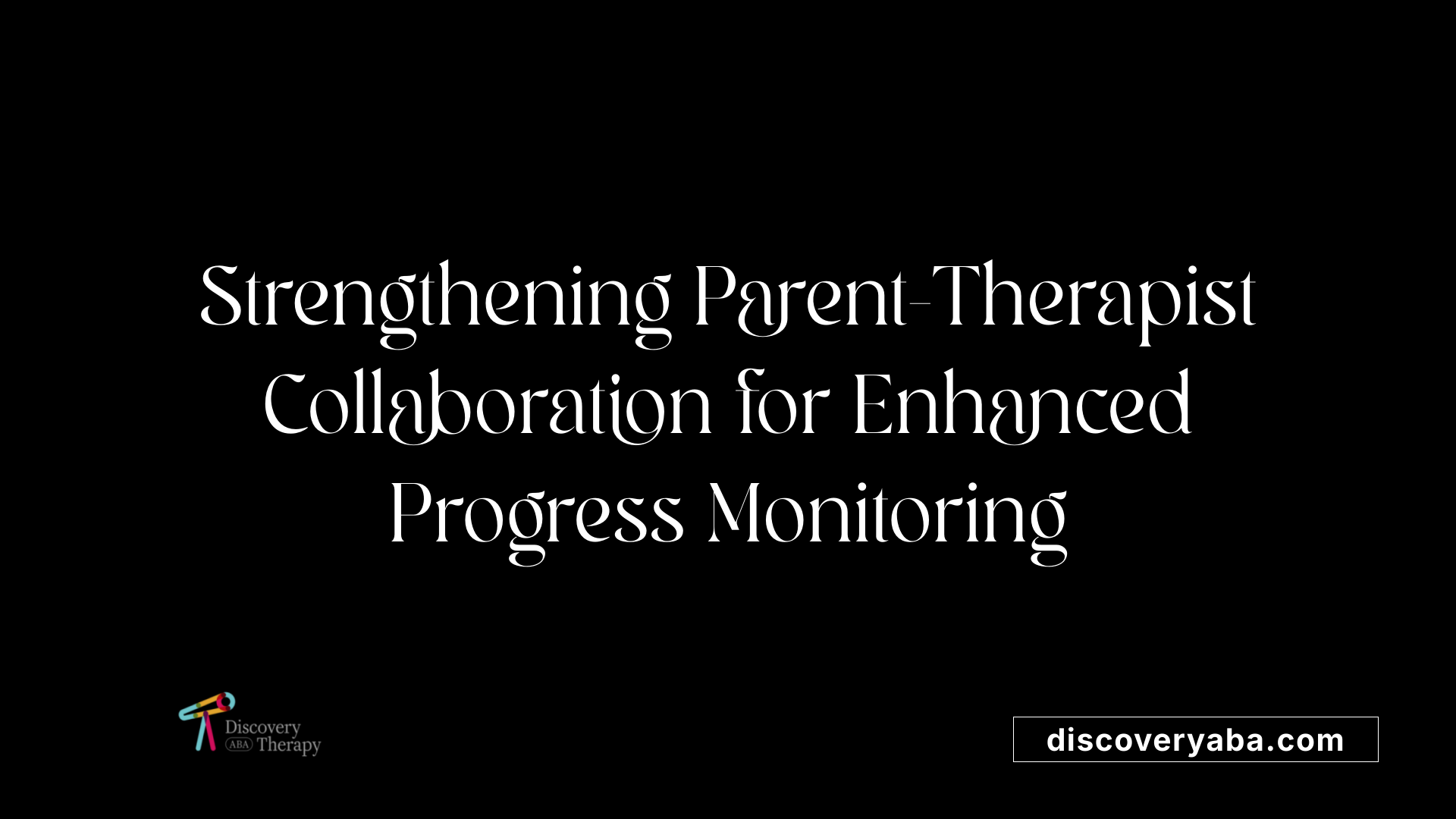
Importance of parent and therapist collaboration
Collaboration between parents and therapists is essential in Applied Behavior Analysis (ABA) therapy. It fosters a supportive environment where both parties work together towards common goals for the child. Regular treatment guidance meetings with the child's BCBA (Board Certified Behavior Analyst) allow parents to discuss progress, share observations, and provide vital anecdotal data that can influence therapeutic strategies. This team-based communication ensures that therapy is tailored to the child’s evolving needs and circumstances, reinforcing the child’s engagement in the therapeutic process.
How do visual aids enhance communication between parents and therapists in ABA therapy?
Visual aids, including graphs and schedules, enhance communication with parents, making tracking progress clearer and more engaging. These tools help parents understand their child’s progress at a glance, allowing for informed discussions during regular update meetings. Visual representations of data not only display trends and patterns effectively but also ensure that everyone involved is aligned on the child’s therapy goals. By incorporating visual aids, both therapists and parents can maintain a collaborative approach to monitoring progress and adjusting treatment plans as necessary.
The Key to Successful ABA Therapy
Measuring progress in ABA therapy is not just about numbers; it’s about ensuring that each child receives personalized, effective treatment that adapts to their changing needs. By utilizing a combination of continuous measurement, detailed assessments, and collaborative communication, therapists and parents can work together to achieve the best possible outcomes for children in ABA therapy. This process of monitoring, adjusting, and supporting is critical for helping children close developmental gaps and thrive in their environments.
References
- Progress Monitoring - Screening and Assessment
- Understanding the Role of Data in ABA Therapy: How Progress is ...
- 4 Ways To Monitor Your Child's Progress In ABA Therapy
- Tracking Progress: How To Measure ABA Therapy Success
- Measuring Progress in ABA Therapy - MBC Behavior Analysis
- Episode 164: How to Measure Progress in ABA Programs
- Tulsa ABA Therapy | Progress Tracking - The Sunshine Academy
- How to Track Progress in ABA Therapy Through Reports and Parent ...
- Importance of ABA Therapy Outcome Measures
- Tulsa ABA Therapy | Progress Tracking - The Sunshine Academy
Find More Articles

How ABA Therapy Helps Reduce Repetitive and Rigid Behaviors

Energy-Efficient Autism Community Resources

How to Use ABA Therapy to Reduce Excessive Repetitive Behaviors

The Role of Play in ABA Therapy

The Benefits of Combining ABA Therapy with Other Support Services

How ABA Therapy Helps Develop Self-Confidence in Children with Autism

The Role of Play-Based ABA Therapy in Early Childhood Development

The Role of Goal-Oriented Sessions in ABA Therapy

How ABA Therapy Works: A Step-by-Step Guide

The Role of Self-Management Strategies in ABA Therapy

How ABA Therapy Supports Emotional Expression in Children

The Role of Parent Training in ABA Programs

How ABA Therapy Supports Positive Transitions Between Activities

How to Reinforce ABA Learning in Community Settings

The Role of Functional Behavior Assessments in Preventing Problem Behaviors

How School-Based ABA Therapy Supports Classroom Success

How to Choose Between At-Home and Center-Based ABA Therapy

How ABA Therapy Helps Develop Conflict Resolution Skills

How to Identify the Best ABA Provider for Your Child

How to Use Token Economies in ABA Therapy

The Role of Peer Modeling in ABA Therapy Success

The Benefits of Naturalistic Teaching Approaches in ABA Therapy

What Is the ABCs of Behavior in ABA Therapy?

The Benefits of Group ABA Therapy for Social Skill Development

How to Encourage Positive Social Interactions with ABA Strategies

How to Introduce New Skills in ABA Therapy Without Overwhelming Your Child

The Benefits of Combining ABA Therapy with Other Interventions

Solar Power for Autism Support Networks

How to Address Hyperactivity with ABA Therapy

Common Misconceptions About ABA Therapy

Understanding the Principles of Positive Reinforcement

Understanding the Principles of Positive Reinforcement

Understanding the Principles of Positive Reinforcement

How ABA Therapy Supports Transitions Between Activities

Understanding the Principles of Positive Reinforcement

How to Identify and Celebrate Small Successes in ABA Therapy Progress

Understanding the Principles of Positive Reinforcement

How to Introduce Visual Schedules for Better Behavior Management

How ABA Therapy Can Reduce Self-Injurious Behaviors

How ABA Therapy Supports Academic Success

The Importance of Early Signs Recognition and ABA Intervention

How ABA Therapy Helps Improve Comprehension and Listening Skills

How to Use Visual Schedules to Support Your Child’s ABA Goals

How ABA Therapy Supports Self-Help Skills Like Dressing and Eating

How ABA Therapy Supports Behavioral Success in Community Settings

How ABA Therapy Helps Build Independence in Daily Activities

Building Social Skills Through ABA Therapy Techniques

The Role of School-Based Behavior Intervention Plans (BIPs)

The Benefits of Scripting and Role-Playing in ABA Therapy

How to Help Your Child Develop Coping Strategies with ABA Therapy

How to Address Hyperactivity and Attention Challenges with ABA Therapy

How to Help Your Child Develop Coping Strategies with ABA Therapy

How ABA Therapy Addresses Challenging Behaviors

The Importance of Social Skill Groups in ABA Therapy

How ABA Therapy Addresses Challenging Behaviors

The Role of Task Analysis in ABA Therapy for Teaching New Skills

How ABA Therapy Helps Improve Focus and Attention in the Classroom
%2520(1).jpeg)
Assessment Tools For People With Autism

Autism And Chronic Pain

How to Use Social Stories to Enhance ABA Therapy Outcomes

How ABA Therapy Helps Prepare Children for School Success

How School-Based ABA Therapy Can Improve Academic Performance

How to Address Resistance to ABA Therapy and Build Engagement

How to Use ABA Therapy to Develop Self-Help Skills in Daily Routines

How to Use Role-Playing in ABA Therapy for Skill Development

How to Handle Regression in Skills During ABA Therapy

How ABA Therapy Supports Social Communication Development

How to Find the Best ABA Therapy Provider for Your Child

How to Create a Reward System That Motivates Your Child in ABA Therapy

The Role of ABA Therapy in Preparing Children for Independent Living

How ABA Therapy Teaches Communication and Social Skills

How School-Based ABA Services Help Students with Autism Thrive

How ABA Therapy Helps Develop Patience and Waiting Skills

How to Support Your Child’s Social Interactions Using ABA Techniques

How ABA Therapy Addresses Anxiety and Fear Responses in Children

The Role of Play-Based ABA Therapy in Skill Development

How ABA Therapy Helps Build Confidence in Children with Autism

The Benefits of Center-Based ABA Therapy for School Readiness

The Role of ABA Therapy in Building Emotional Intelligence

How to Use Differential Reinforcement in ABA Therapy

Exploring Different ABA Techniques and Strategies

How to Prepare for IEP Meetings When Seeking ABA Therapy Support

How to Use ABA Therapy to Develop Resilience and Coping Mechanisms

How to Work with ABA Therapists to Set Realistic and Achievable Goals

How to Recognize Burnout in ABA Providers and Address It

The Connection Between ABA Therapy and Improved Social Skills

How ABA Therapy Helps Address Aggressive Behaviors
.jpeg)
Does Processed Food Cause Autism?

The Benefits of ABA Therapy for Adolescents with Autism

How to Reinforce ABA Strategies at Home for Consistent Progress

How to Create a Positive Learning Environment at Home with ABA

Autism And Dementia: The Connection and Differences

How ABA Therapy Supports a Lifetime of Learning and Growth

The Role of Functional Behavior Assessments in ABA

How ABA Therapy Helps with Anger Management Skills

How to Address Food Selectivity Using ABA Techniques

How ABA Therapy Supports a Smooth Transition to Middle and High School

How to Address Perseveration in ABA Therapy
Contact us
North Carolina, Tennessee, Nevada, New Jersey, Utah, Virginia
New Hampshire, Maine
Massachusetts, Indiana, Arizona, Georgia
.avif)


